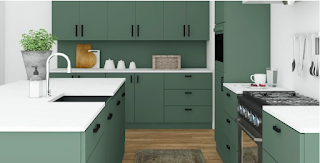Best Modern Industrial Interior Design Style Ideas
What is Industrial Interior Design?
Industrial interior design is the perfect synthesis of form and function. Inspired by the raw framework in factories, this style usually embraces concealed elements like bricks and concrete, wiring, pipes, ducting, etc.
The beauty of industrial design lies in embracing the imperfections, wear and tear, and weathering seen in the materials and finishes. It is the most unpretentious style, laying bare all its rawness for the world to see and celebrate.
It is the perfect medley of minimalism with farmhouse rustic and mid-century contemporary. Common misconceptions of industrial design dictate that industrial interiors tend to be stark and intense. However, with correct lighting and appropriate furnishing, this style spells cozy and intimate like its Scandinavian equivalent.
Origins and History of Industrial Interior Design
Factories in the 19th and 20th century New York witnessed the start of mass production and thus required to be built with robust building materials like steel and concrete. They housed large, grid-paned windows that let in tons of natural light, towering ceilings, open floor plans, spacious lofts, distressed brick walls, and metal pipes. Finally, the housing shortage at the turn of the millennium forced the authorities and designers to turn these dead, old factories into loft apartments.
Finally, the rise of minimalism in the modern century saw the industrial-chic trickling into interior home design, cafes, offices, etc. The retro and rustic looks perfectly fit the sleek, straight lines and pacified the modern, minimalist homeowner. Despite all the frills, the industrial interior design remains at its core utilitarian.
Characterisitcs of Industrial Interior Design
While an industrial design may look austere and uncomplicated to the eyes, it needs to follow a fixed set of rules to look striking. Let’s look at some textbook features of industrial elements in interior design.
Neutral color palette:
Industrial aesthetics uses a wide array of neutral tones of blacks, grays, whites, and browns. This gives the entire space an earthy and grounded feel.
Infuse natural light:
Large windows with black panes, huge archways, and massive entry doors are all trademark elements of industrial design. This means that during the day, an interior is done up in this style and rarely needs to make use of external lighting.
Highlight architectural language:
One of industrial design’s core fundamentals is celebrating the building’s industrial history. Open plans, lofts, and high ceilings are coupled with exposed brick, visible pipework, and concrete floors. Columns and beams are left untreated and allowed to bask in their glory.
Refurbished materials:
As part of the industrial look, designers often repurpose old furniture by either stripping it down to give a distressed look or using reclaimed wood to build new pieces. Reclaimed wooden furniture showcases the old-world charm like no other. Decking the house with repurposed furniture is not just good sense but also saves big bucks. The juxtaposition of natural elements like wood against raw metal is a jarringly handsome one.
An industrial era classic – Edison bulbs are a crowd-pleaser! Used as a single piece, under lampshades, or in groups to form a chandelier, these lights are warm and inviting. Large blown-glass spheres, pendant lights, and floor lamps are common industrial design choices.
Bold lines:
Industrial spaces are all about that bold and confident vibe. Black metal is used widely to accentuate this design style‘s straight lines and rigid forms. Unlike art deco, the bold shapes and lines are not glitzy or colorful. This muted and subtle feature, in fact, becomes a solid design statement. Click here to know more.





Comments
Post a Comment